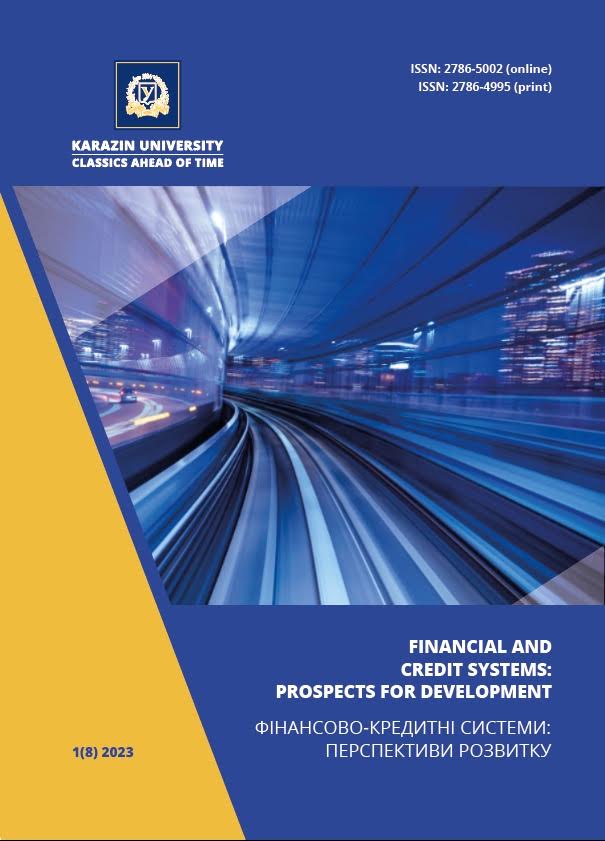FEATURES OF THE ORGANIZATIONAL STRUCTURE OF THE ACCOUNTING OF NON-CURRENT TANGIBLE ASSETS AND DIRECTIONS FOR THEIR IMPROVEMENT
Abstract
This article substantiates the theoretical provisions of the accounting of non-current material assets and offers practical recommendations for improving the methodology of the organization of the accounting of the studied assets. The issue of ensuring uniform approaches to determining the economic essence of non-current tangible assets is considered. Reasoned classification and determined methodical basis of accounting. The recognition and evaluation process of non-current tangible assets is analyzed, a comparative description of the accounting of non-current assets according to the National accounting regulations (standards) and International accounting standards is provided.
Methodological principles of accounting of non-current material assets at the enterprise were studied. The peculiarities of the formation of reporting information on the accounting of non-current material assets at the enterprise are determined. Modern war-pandemic and other crisis conditions of the functioning of enterprises require optimal use of non-current material assets of the enterprise.
Studies of problematic accounting issues of non-current material assets have been conducted, ways of solving them have been developed to improve the management of such assets. Conceptual principles of financial accounting of non-current tangible assets are considered. The procedure for the assessment of non-current tangible assets and the organizational support of accounting in terms of the elements of the accounting policy regarding non-current tangible assets in terms of its components are considered. The problems of the main issues of accounting (financial) accounting in relation to non-current material assets are defined and proposals are formulated to improve the organizational structure of the accounting of non-current material assets.
Downloads
References
Lishilenko, O. V. (2015). Buhgalterskij oblik: pidruchnik dlya VNZ [Accounting: a textbook for universities]. Kyiv: CUL [in Ukrainian].
Pivtorak, M.V. (2006). Oblik osnovnih zasobiv u ribnomu gospodarstvi [Accounting of fixed assets in fisheries]. (Extended abstract of candidate’s thesis). Kyiv: NNC «Institut agrarnoyi ekonomiki» UAAN [in Ukrainian].
Banera, N. ta in. (2017). Oblik i audit: navchalnij posibnik [Accounting and auditing: a study guide]. (Ed) Skasko O. Lviv: Rastr-7 [in Ukrainian].
Gudz, N. (2016). Buhgalterskij oblik: navchalnij posibnik [Accounting: study guide]. (Ed) Denchuk P, Romaniv R. Kiyiv [in Ukrainian].
Diba, V. M. (2008). Oblik ta analiz neoborotnih aktiviv: monogr. [Accounting and analysis of non-current assets: a monograph]. Kyiv.: KNEU [in Ukrainian].
Zagorodnij, A.G. Voznyuk, G.L. (2007). Finansovo-ekonomichnij slovnik [Financial and economic dictionary]. Kiyiv: Znannya [in Ukrainian].
Mochernij, S. V. (2000). Ekonomichna enciklopediya [Economic encyclopedia]. Kyiv: Vidavnichij centr «Akademiya», volume 1 [in Ukrainian].
Sheludko, V. (2013). Finansovij menedzhment: pidruchnik [Financial management: a textbook]. Kyiv [in Ukrainian].
Lovinska, L.G. (2006). Ocinka v buhgalterskomu obliku: monografiya [Assessment in accounting: a monograph] Kyiv: KNEU [in Ukrainian].
Nacionalne polozhennya (standart) buhgalterskogo obliku 7 «Osnovni zasobi» vid (2000). № 92. Retrieved from: https://zakon.rada.gov.ua [in Ukrainian].
Mizhnarodnij standart buhgalterskogo obliku 16 «Osnovni zasobi» [National regulation (standard) of accounting 7 "Fixed assets"] Retreved from http://www.minfin.gov.ua [in Ukrainian].
Tamulevičienė, D., Mackevičius, J. (2020). Methodology of complex analysis of tangible fixed assets. Journal of Entrepreneurship and Sustainability Issues, 7(2),1341-1352 [in English].
Zinkeviciene, D., Vaisnoraite, G., (2014). Factors affecting the choice of tangible fixed asset accounting methods: theoretical approach. European Scientific Journal, June special edition, 1, 98-208 [in English].
Copyright (c) 2023 Financial and credit systems: prospects for development

This work is licensed under a Creative Commons Attribution 4.0 International License.

